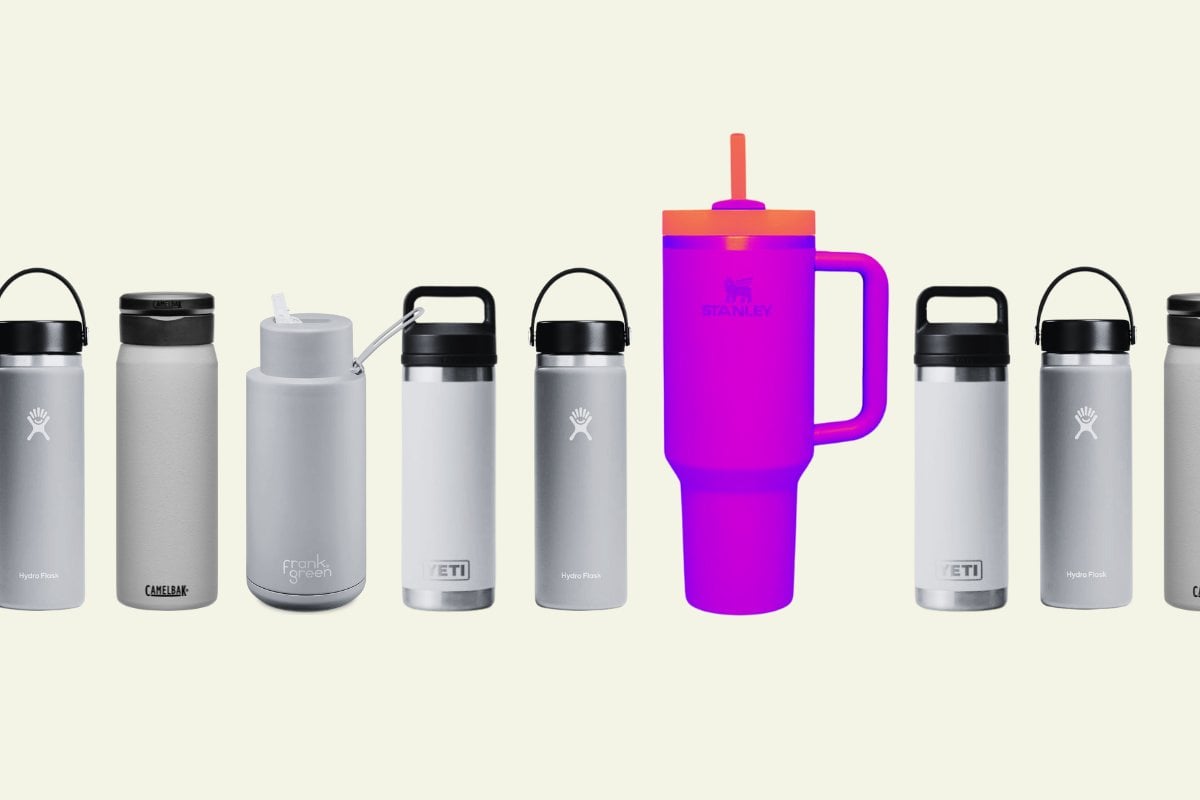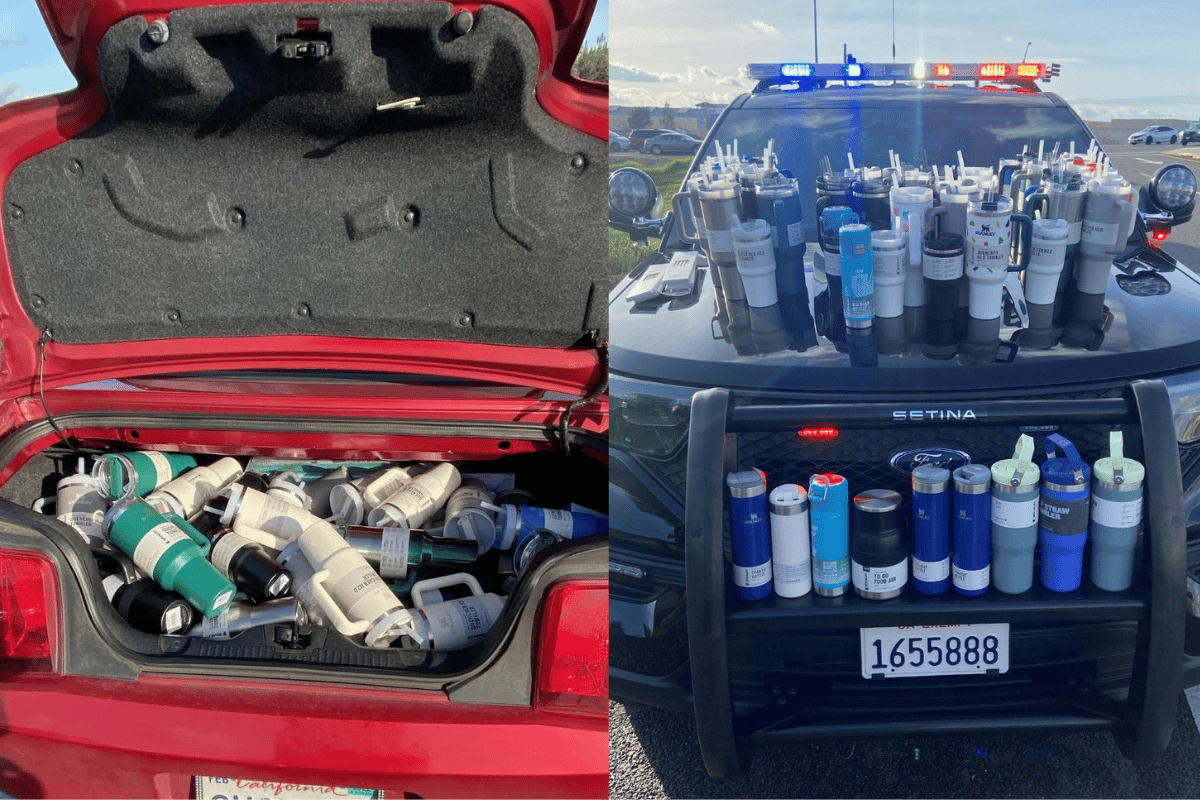
Last week, a 23-year-old Californian woman was arrested for grand theft.
She didn't steal a car. She didn't sell illicit drugs, steal designer bags or embezzle hundreds of thousands of dollars.
It was... water bottles. This woman shoplifted 65 Stanley cups.
The haul was valued at nearly $2,500 US dollars. The Roseville Police Department shared images of the woman's car, stuffed with drink bottles in absolutely every crevice, along with the caption: "While Stanley Quenchers are all the rage, we strongly advise against turning to crime to fulfill your hydration habits."
It was a bizarre scene.
 Stanley seize. Credit: Roseville Police Department/Facebook.
Stanley seize. Credit: Roseville Police Department/Facebook.

Top Comments